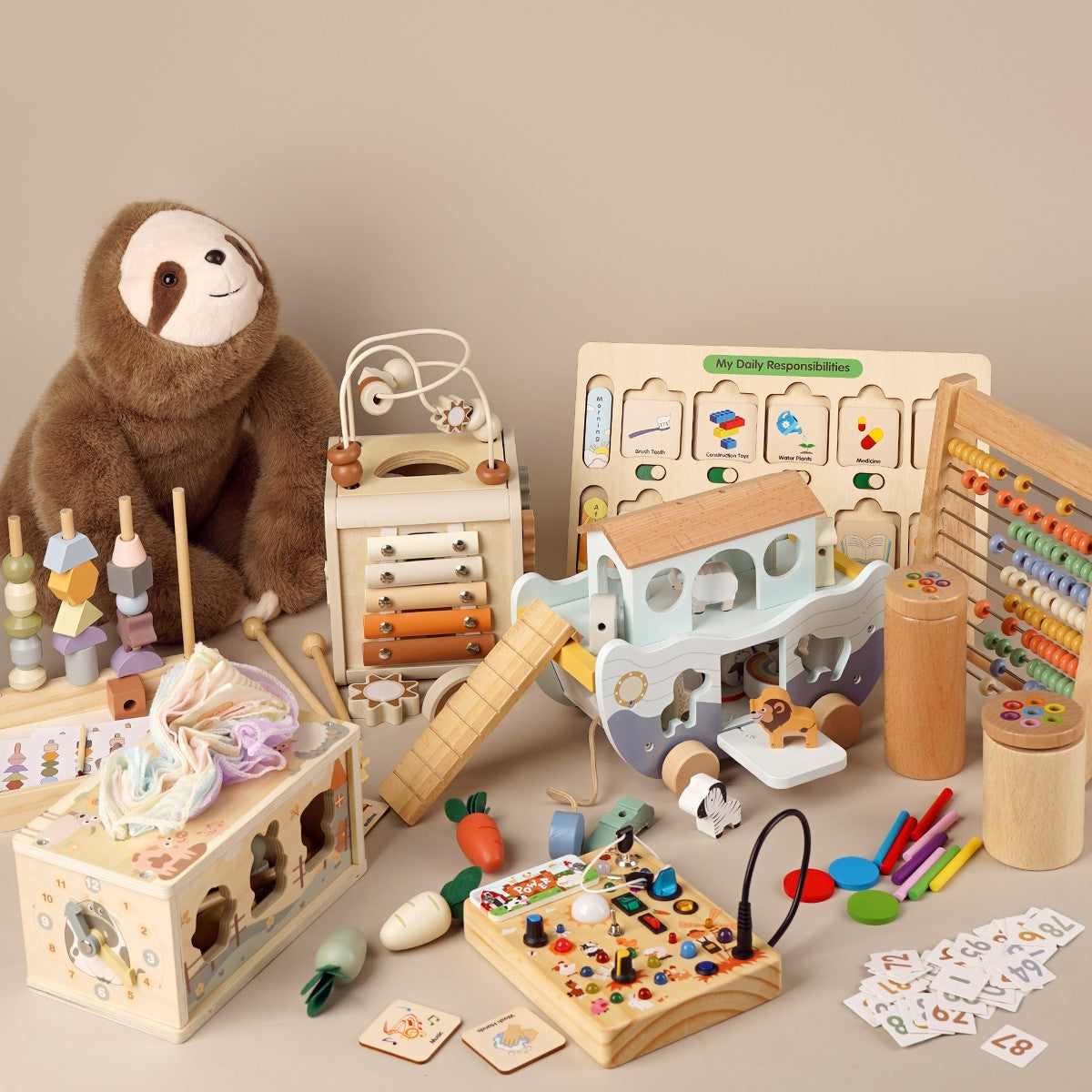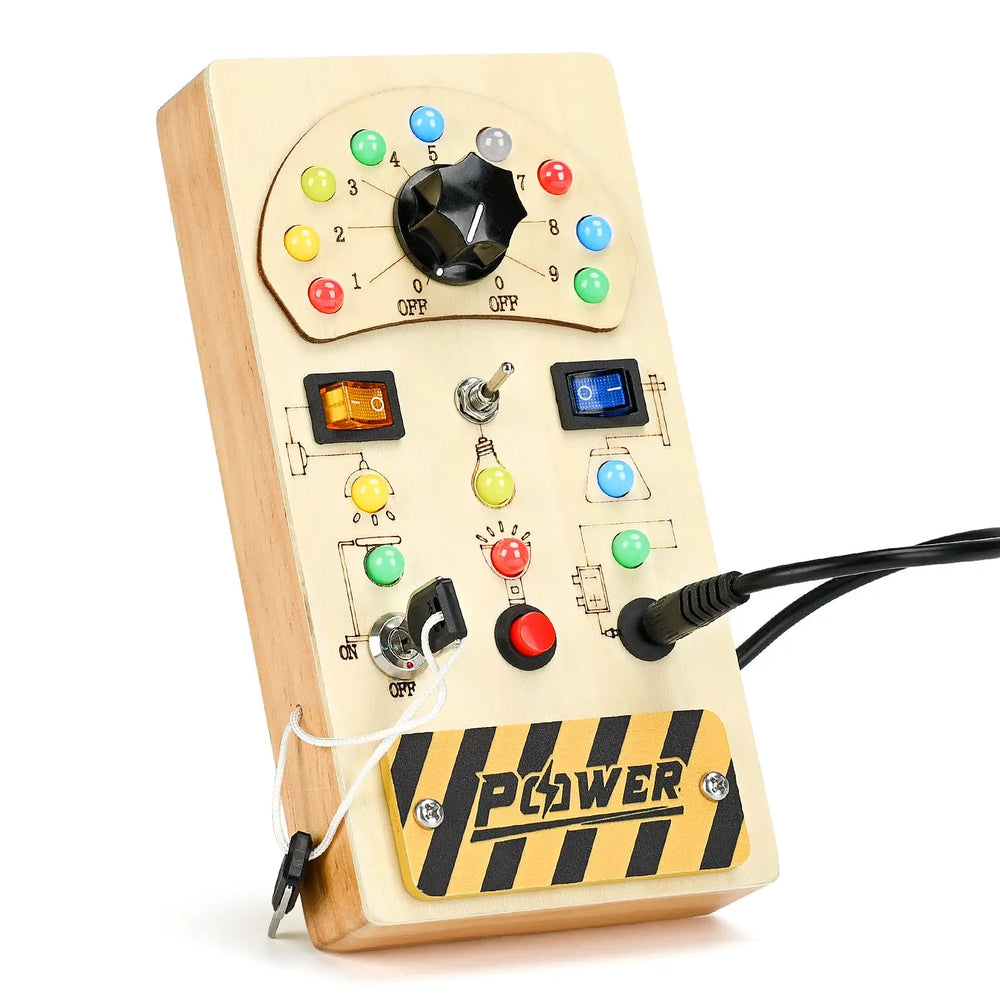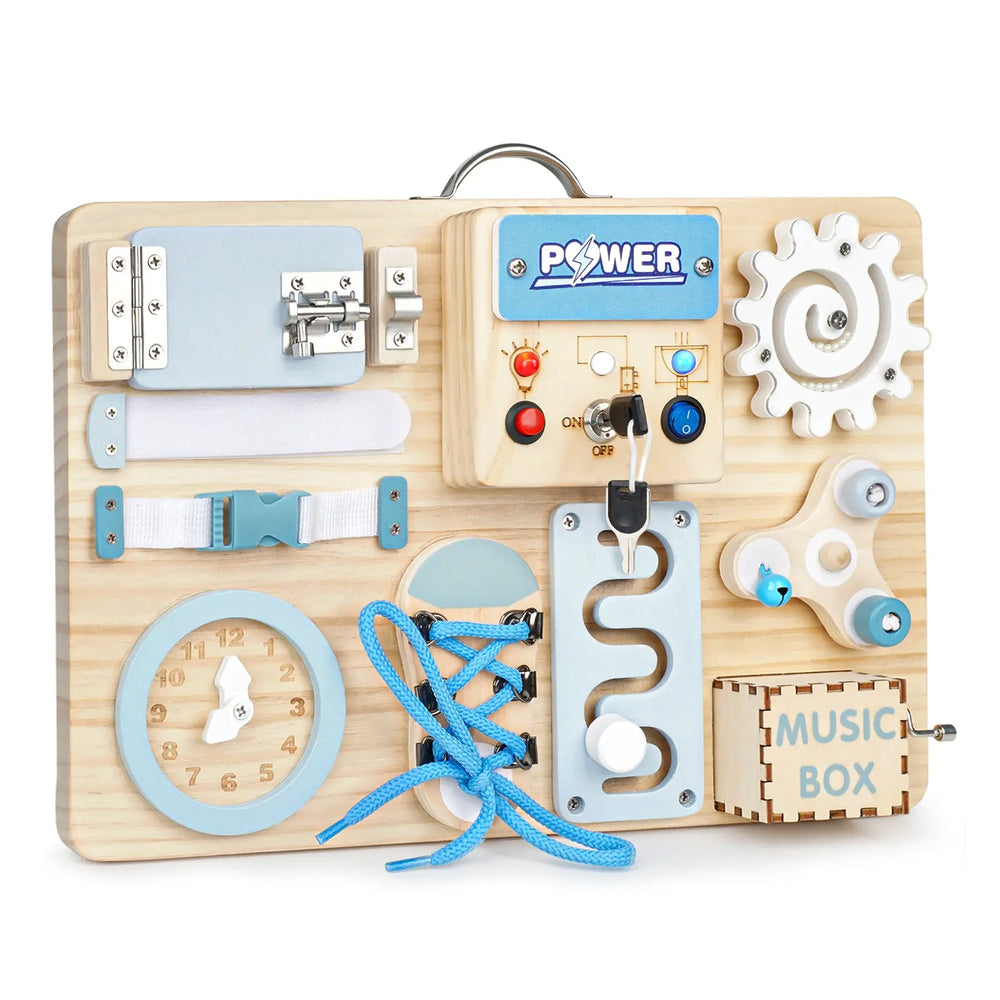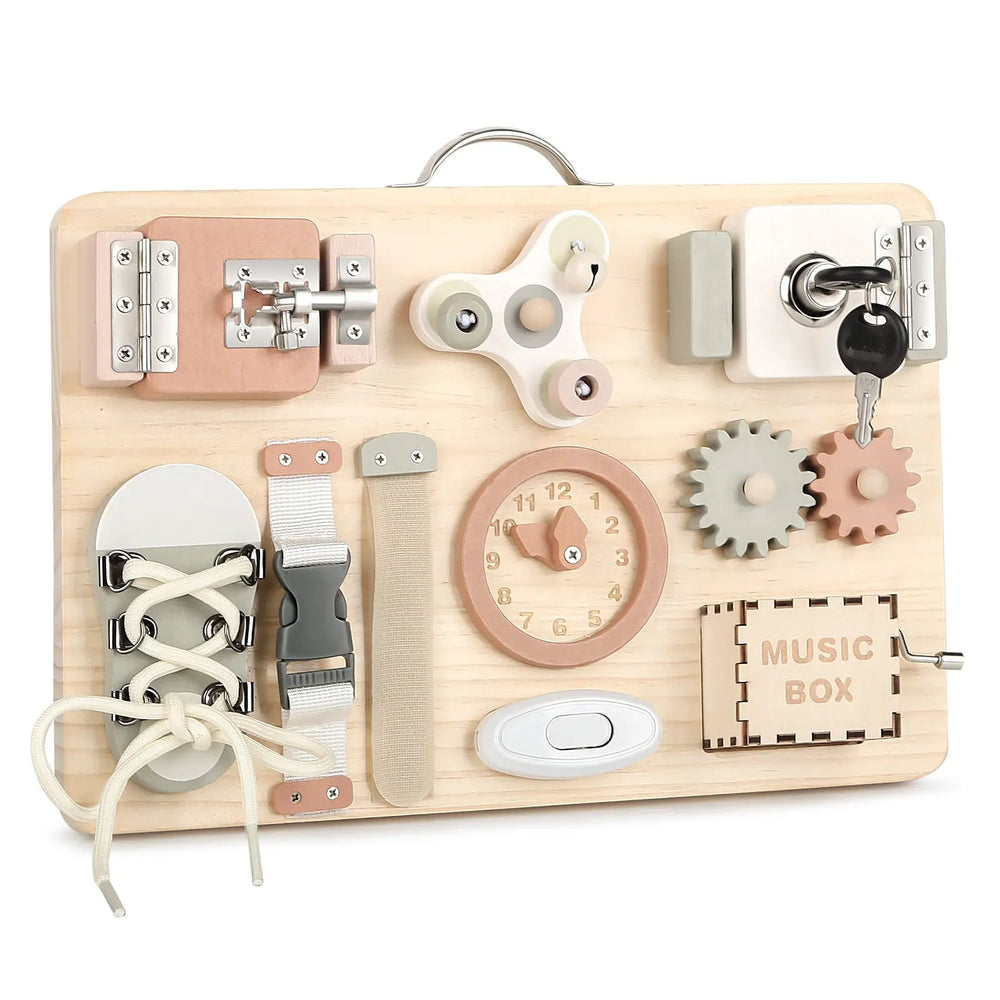Montessori Toys and Cognitive Science: Why Purposeful Play Matters
 4 Science-Backed Topics About Montessori Toys
4 Science-Backed Topics About Montessori Toys
1. Neuroplasticity & Sensitive Periods
- How montessori toy align with brain development windows (0-6 years)
- Research: University of Virginia study (2021) on sensorial material impact
- Key features: Self-correcting design, isolation of concepts
2. Executive Function Development
Brown University research on Montessori play and:
- Working memory improvements (23% vs control group)
- Cognitive flexibility development
- Impulse control milestones
3. Mathematical Mind Theory
Montessori's original research applied through:
- Bead sequencing for number sense (fMRI validation)
- Shape sorting & spatial reasoning (Johns Hopkins 2023 trial)
4. Modern Adaptation Challenges
Digital age considerations:
- Screen vs. tangible play (AAP guidelines comparison)
- Hybrid learning tools efficacy
- Cultural adaptation studies (UNICEF global report)
Why Choose Montessori Toys Over Traditional Toys?
| Feature | Montessori Toys | Traditional Toys |
| Purpose | Skill development | Entertainment |
| Materials | Natural (wood, fabric) | Plastic, synthetic |
| Complexity | Simple, focused | Often overstimulating |
| Play Style | Independent, guided | Adult-directed or passive |
| Longevity | Grows with child | Quickly outgrown |
To explore more about the differences between traditional and modern education, check out: https://joyrealtoys.com/blogs/news/montessori-education-a-different-approach-to-learning
Best Montessori Toy by Age Group
1. Infants (0-12 Months)
- Black & White Contrast Cards (stimulates vision)
- Wooden Grasping Beads (strengthens grip)
- Montessori Mobiles (encourages focus)
2. Toddlers (1-3 Years)
- Wooden Stacking Rings (hand-eye coordination)
- Shape Sorters (cognitive skills)
- Pikler Triangle (gross motor development)
3. Preschoolers (3-6 Years)
- Sandpaper Letters (pre-writing skills)
- Bead Counting Frames (math skills)
- Dressing Frames (fine motor skills)
Want to see montessori toys by Age? Click here:https://joyrealtoys.com/blogs/news/montessori-busy-boards-by-age-safe-skill-building-toys-for-10-months-to-4-years
How Montessori Toy Support Child Development
1. Fine & Gross Motor Skills
- Threading Beads → Improves dexterity
- Climbing Structures → Develops balance
2. Cognitive Development
- Puzzles & Sorting Games → Logical thinking
- Sound Cylinders → Auditory discrimination
3. Language & Communication
- Object Matching Cards → Vocabulary expansion
- Story Stones → Encourages storytelling
4. Emotional & Social Skills
- Cooperative Games → Teamwork & sharing
- Real-Life Tools → Fosters responsibility
Which Montessori Toy Are Currently Trending?
Montessori education emphasizes hands-on learning, independence, and child-led exploration. Parents and educators are increasingly turning to Montessori-inspired toys that foster creativity, problem-solving, and fine motor skills. If you’re looking for the latest trending Montessori toys, here’s a curated list of the most popular picks in 2024.
1. Wooden Rainbow Stackers
🌈 Why They’re Trending
These colorful, open-ended wooden arches encourage imaginative play, balance, and spatial awareness. Kids love using them for building bridges, tunnels, or even as pretend rainbow landscapes.
- 🔹 Best For: Creativity, fine motor skills, color recognition
2. Object Permanence Boxes
📦 Why They’re Trending:
Inspired by Montessori principles, these boxes teach babies that objects still exist even when out of sight. They drop a ball into a hole and watch it reappear—great for cognitive development.
- 🔹 Best For: Infants (6+ months), problem-solving, hand-eye coordination
3. Wooden Counting Peg Boards
🔢 Why They’re Trending:
Math meets fine motor skills! These peg boards help children grasp counting, patterns, and number recognition through tactile play.
- 🔹 Best For: Toddlers & preschoolers, early math skills, concentration
4. Montessori Busy Boards
⚙️ Why They’re Trending
Packed with latches, zippers, and buttons, busy boards keep little hands engaged while teaching essential life skills.
- 🔹 Best For: Fine motor development, practical life skills (1-4 years)
5. Balance Boards (Wobble Boards)
⚖️ Why They’re Trending:
A favorite for active kids, these boards improve balance, core strength, and can even double as a bridge or slide in pretend play.
- 🔹 Best For: Gross motor skills, sensory play (2+ years)
6. Sensory Play Kits (Rice, Sand, or Water Tables)
💦 Why They’re Trending
Montessori encourages sensory exploration, and these kits provide endless fun with scooping, pouring, and texture discovery.
- 🔹 Best For: Sensory development, focus, calming play
7. Wooden Shape Sorting Puzzles
🧩 Why They’re Trending
Unlike plastic alternatives, wooden puzzles offer durability and a natural feel. They help with shape recognition and problem-solving.
- 🔹 Best For: Cognitive skills, hand-eye coordination (1-3 years)
8. Montessori-Inspired Building Blocks
🏗️ Why They’re Trending
Simple, unpainted wooden blocks encourage open-ended construction and creativity without overwhelming distractions.
- 🔹 Best For: Spatial reasoning, imaginative play (1-6 years)
Choosing Montessori Toy: Which Brands Are Recommended?
Choosing Montessori toy means looking for items that support a child's independence, concentration, and development through purposeful activity. While the specific brand is less important than the qualities of the toy, certain manufacturers consistently produce materials aligned with the Montessori philosophy.
JOYREAL: Thoughtful, Nature-Inspired Play for Curious Minds
At Joyreal toys craft minimalist wooden toys designed to spark imagination and nurture a child’s innate curiosity.
-
Celebrating Open-Ended Exploration – No "right" or "wrong" way to play
Honoring Natural Materials – Sustainably sourced wood, soothing textures, and organic shapes - Encouraging Child-Led Discovery – Simple designs that grow with a child’s evolving creativity
The JOYREAL Difference
- Less Structured, More Possibility – Invites storytelling, experimentation, and sensory-rich learning.
- Designed for Deep Engagement – Calming, screen-free play that builds focus and independence.
- A Natural Extension of Montessori Values – Perfect for homes and classrooms seeking simplicity.
Ideal for Parents & Educators Who Value:
- Unhurried, imaginative play
- Eco-conscious, heirloom-quality toys
- Toys that "disappear" into the background, letting creativity shine
Which brands suit you best? Click here to find out: Which of These Top 4 Brands Matches Your Child's Learning Style?
Maybe it will be helpful for you:
Recent Post

Top Joyreal AAC Devices 2025: Costs, Autism Communication Tips & Smart Buying Guide
Modern AAC Devices for Autism Choosing the right autism communicati...

Why the Joyreal Drum Set Is the Best First Music Toy
Choosing a toddler’s first music toy is a surprisingly big decision...

Top Sensory and AAC Communication Board Gifts for Little Communicators
Why AAC Communication Solutions Matter AAC (Augmentative and Alter...

Why Wooden Toys Make Better Christmas Gifts?
Every year, parents face the same holiday dilemma: Should we buy th...

What Finally Helped My Toddler Speak Up?
If you’re a toddler mom, you already know how much emotional weight...

Joyreal Christmas Toys Deals 2025
Enjoy instant savings across nearly every category, from early lear...

How Wooden Montessori Toys Support a Sustainable Childhood
Most parents don’t say it out loud, but many feel the same quiet fr...

Top Christmas Gifts to Help Kids Communicate Better This Holiday Season
The holiday season brings joy, family bonding, and endless opportun...

How to Make DIY Printable Communication Boards
Communication is at the heart of every child’s development — and fo...

Top 5 Christmas Gifts That Bring Families Closer (2025 Guide)
Christmas isn’t just about the gifts — it’s about the moments we c...











